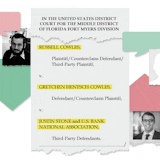Your phone could save your life.
There is no shortage of drawbacks of having a needy pocket computer follow you around 24 hours a day. There is the eyestrain, sleep disruption, erosion of privacy, no work-life balance and a busted attention span. But our phones have also made speedy emergency warnings the norm, whether they're about an active shooter, wildfire, chemical spill or abducted child.
The exact options vary by location and where you work or go to school. Here are some basics on what alerts you can sign up for or opt out of.
Wireless emergency alerts
You are probably already set up to receive the really important alerts on your phone without knowing it. The United States has had a wireless emergency alert system since 2012, used for everything from natural disaster warnings to missing person alerts. There are a few main types of wireless emergency alerts: national alerts, imminent threats, Amber alerts and public safety notifications. You can opt out of or customize some of them in your phone's settings, and they show up as a simple push alert on your device's screen.
The most urgent and rarely used is a Presidential Alert, which cannot be turned off. This has only been tested once and not used for an actual emergency so far. The FCC is renaming this category the National Alert this year and expanding it to include alerts from the FEMA administrator.
The threat alerts can be sent by various government agencies like the National Weather Service or law enforcement and targeted according to your phone's current location. These might include evacuation warnings during a hurricane or wildfire or a shelter-in-place warning during a mass shooting or bombing. Finally, there are Amber alerts used help to find minors who may have been abducted. All are typically based on where you are at the moment, so if you travel you will get alerts relevant to your latest location.
If you have an iPhone or iPad, you can check to make sure these are turned on by going to Settings then Notifications, and scrolling all the way down to the bottom of the screen. You'll see three options in a section called Government Alerts. Make sure the ones you want are toggled on and are green. There's an option to mute alerts so they don't play a sound when your device is in silent mode.



